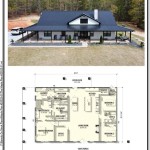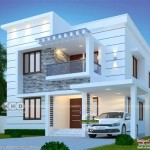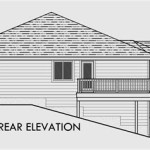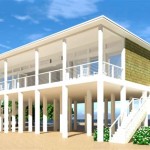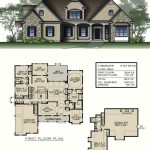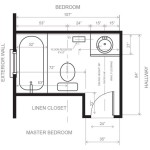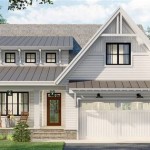500 Sq Ft House Floor Plan: Maximizing Space and Functionality
The demand for efficient and affordable housing solutions has fueled significant interest in small-space living. A 500 sq ft house floor plan presents a unique set of design challenges and opportunities. Successfully navigating these requires careful consideration of spatial organization, multi-functional elements, and smart storage solutions. This article will delve into the core principles of designing a functional and comfortable residence within this compact footprint.
Creating a livable space within 500 sq ft demands strategic planning. Every square inch must be utilized effectively, meaning careful consideration of the flow of movement, the placement of furniture, and the incorporation of elements that serve multiple purposes. Prioritization is key. It is essential to determine the most important features and functions for the inhabitants and to design the space accordingly.
One of the primary considerations is the overall layout. Open-concept designs are generally favored for smaller spaces as they promote a sense of spaciousness and allow natural light to penetrate further into the interior. However, even in an open-concept setting, defining distinct zones for living, sleeping, cooking, and possibly working is crucial for maintaining a sense of order and functionality.
Another important aspect is the selection of furniture. Scale is paramount. Over-sized furniture can quickly overwhelm a small space, making it feel cramped and uncomfortable. Opting for furniture that is proportionally smaller and has a lighter visual weight is essential. Built-in furniture, such as bookshelves or storage benches, can be integrated seamlessly into the design, maximizing space. Foldable or convertible furniture, such as a sofa bed or a dining table that can be collapsed when not in use, offers further flexibility.
Effective storage is non-negotiable in a 500 sq ft house. Clutter can quickly make a small space feel even smaller and more chaotic. Vertical storage solutions, such as tall shelving units or storage that extends to the ceiling, are highly effective for maximizing space. Utilizing the space under beds and sofas for storage can also significantly contribute to decluttering the living area. Furthermore, incorporating storage into unexpected places, such as the backs of doors or within furniture legs, can further optimize space utilization.
Prioritizing Functionality and Flow
The success of a 500 sq ft house floor plan hinges on its ability to facilitate seamless movement and accommodate essential functions without feeling cramped. This often involves carefully considering the placement of key areas and adopting innovative design strategies to maximize usability.
The kitchen, though compact, must be functional. A galley kitchen layout, where cabinets and appliances are arranged along two parallel walls, is a popular choice for small spaces due to its efficiency. Utilizing vertical space with tall cabinets and open shelving can maximize storage. Incorporating a small breakfast bar or a fold-down table can provide a dining area without taking up too much space. Appliances should be chosen carefully, opting for smaller, multi-functional models, such as a combination microwave and oven or a compact refrigerator.
The living area often serves as a multi-purpose space, accommodating seating, entertainment, and sometimes even a home office. A sectional sofa can provide ample seating without taking up as much space as individual chairs and sofas. A wall-mounted television can free up floor space. Incorporating a small desk or a foldable table can create a designated workspace. The use of area rugs can help define the living area and create a sense of coziness.
The sleeping area can be separated from the living area using a room divider, a curtain, or a strategically placed bookcase. Loft beds are another option, freeing up floor space for other functions. Alternatively, a Murphy bed can be folded away during the day, transforming the sleeping area into a living space. Minimalist décor and a neutral color palette can contribute to a sense of calm and spaciousness in the sleeping area.
Maximizing Natural Light and Ventilation
Natural light and ventilation play a crucial role in making a small space feel more open and airy. Integrating large windows, skylights, and other features that maximize natural light penetration is essential.
Large windows not only allow ample natural light to enter the space but also provide views of the outdoors, creating a sense of connection with nature. Strategically positioning windows to capture sunlight at different times of the day can further enhance the ambiance of the space. Reflective surfaces, such as mirrors, can be used to bounce light around the room, making it feel brighter and more spacious. Light-colored walls and ceilings also contribute to maximizing light reflection.
Proper ventilation is crucial for maintaining a comfortable and healthy living environment, particularly in a small space. Ensuring adequate airflow can help prevent moisture build-up and improve air quality. Cross-ventilation, achieved by placing windows on opposite sides of the house, is an effective way to promote airflow. Ceiling fans and strategically placed vents can also help circulate air.
In addition to windows, skylights can be incorporated to introduce natural light from above. Skylights are particularly effective in areas that may not have access to direct sunlight from windows. They can also create a dramatic effect, adding visual interest to the space.
Smart Storage Solutions and Multi-Functional Design
The implementation of innovative storage solutions and multi-functional design elements is paramount in optimizing the functionality and livability of a 500 sq ft house.
Built-in storage, such as shelving units, cabinets, and drawers, can be seamlessly integrated into the design to maximize space utilization. Custom-built storage solutions can be tailored to fit specific needs and optimize the layout of the space. Utilizing vertical space with tall shelving units and cabinets that extend to the ceiling can significantly increase storage capacity.
Multi-functional furniture, such as sofa beds, folding tables, and storage benches, offers versatility and adaptability, allowing spaces to be easily transformed to accommodate different activities. A sofa bed can be used as a sofa during the day and converted into a bed at night. A folding table can be used as a dining table when needed and folded away when not in use. Storage benches provide seating and storage simultaneously.
Utilizing the space under beds, sofas, and stairs for storage can significantly increase storage capacity without taking up additional floor space. Bed risers can be used to elevate the bed, creating more storage space underneath. Storage containers and drawers can be used to organize items under the bed. The space under stairs can be transformed into a storage area with shelves, drawers, or even a small closet.
In conclusion, designing a functional and comfortable 500 sq ft house requires careful planning, strategic design choices, and a focus on maximizing space utilization. By prioritizing functionality, incorporating natural light, and implementing smart storage solutions, it is possible to create a livable and enjoyable home within a small footprint.

190 Best Small Floor Plans Ideas House

Cabin Style House Plan 1 Beds Baths 500 Sq Ft 924 7 Eplans Com

500 Square Foot Smart Sized One Bedroom Home Plan 430817sng Architectural Designs House Plans

House Plans Under 500 Square Feet

Small House Plan Idea 500sqft

Farmhouse Style House Plan 1 Beds Baths 500 Sq Ft 116 129 Houseplans Com

Plan 500b Attached Adu 500 Sq Ft Hiline Homes

Plan 76166 Tiny Floor Under 500 Sq Ft Has 2 Bedrooms And 1

500 Sq Ft House Plans Modern 20x25 Houseplan

Pin Page
See Also

